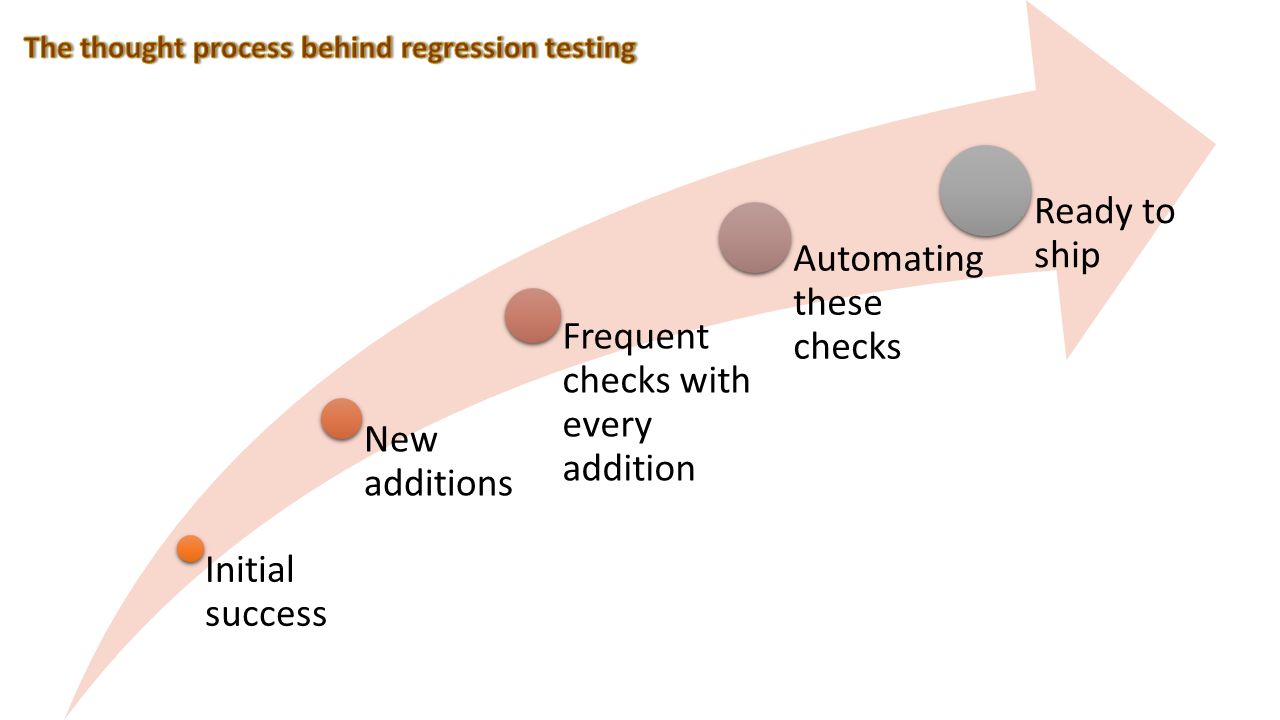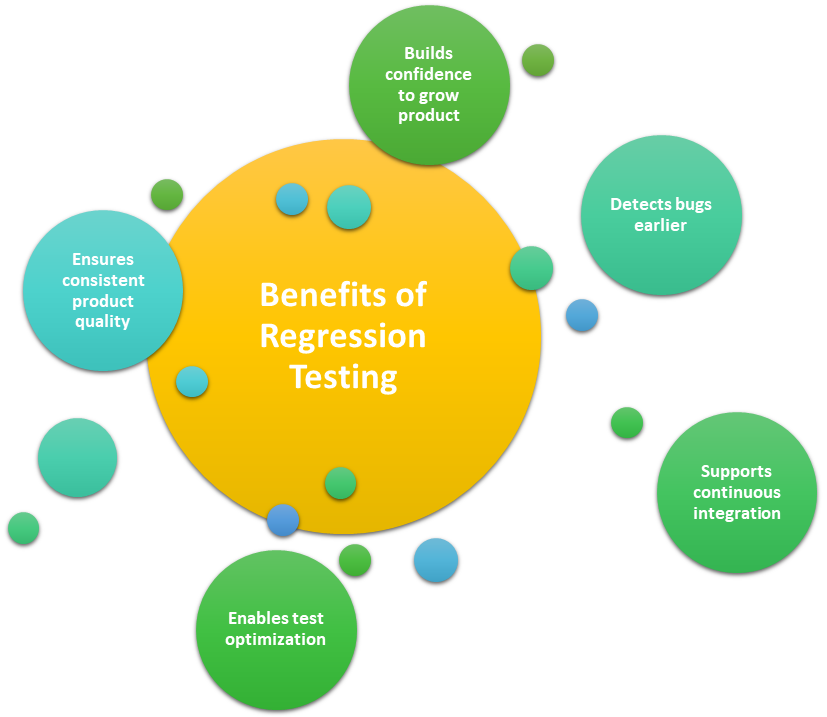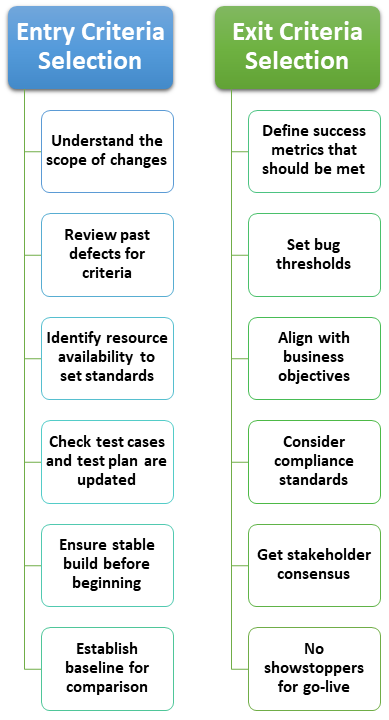Entry and Exit Criteria: The Gatekeepers of Successful Regression Testing
|
|
Imagine you’re preparing a dinner involving a complex dish, let’s say a gourmet lasagna, which requires precise preparation and execution, similar to a software release. Before you begin assembling the lasagna, certain elements need to be ready. Likewise, once you start cooking, you need to make sure the lasagna is prepared correctly before serving. By following these steps, you should be able to prepare a dish that is the pièce de résistance of the dinner.
In this analogy, we had an entry criterion to ensure you’re fully prepared to make the lasagna. Similarly, the exit criteria confirmed that the lasagna is ready to be enjoyed, just as thorough testing ensures that the software is prepared for release.
Let’s delve into the concepts of entry and exit criteria in depth in the context of regression testing.
What is regression testing?
Regression testing, in the context of software development, is like periodically rechecking your lasagna recipe to ensure that the tweaks you’ve made along the way have kept the classic taste and texture you’ve perfected.
Imagine that after you’ve made your gourmet lasagna several times, you decide to make small changes – perhaps you want to add a new herb or use a different cheese blend. Each time you make one of these changes, you need to ensure that the lasagna still has the same delicious flavor and structural integrity as the original recipe. This is regression testing.

From the above diagram, you can see that regression testing is about maintaining quality while allowing for improvement and innovation. Just like how you’d want your lasagna to be recognized for its consistent taste even with new ingredients, you want your software to be reliable regardless of updates and enhancements.
Benefits of regression testing
Regression testing offers a multitude of benefits, some of which are mentioned below.

How to choose test cases for regression testing?
The essence of regression testing is catching issues that additions or updates to the existing application could introduce.
When it comes to picking test cases for regression testing, you can follow the below guidelines.
- Understand the Scope: Review the application’s features, requirements, and existing test cases and identify areas of the software that are likely to be affected by the changes. You should also consult with developers, business analysts, and stakeholders to understand the impact of new code changes.
-
Select Test Cases: Choose existing test cases that cover the functionality likely to be affected by recent code changes. Prioritize these test cases based on the criticality of features, complexity of changes, and areas with a history of defects.Master defect management through this article.
- Update Test Cases: Modify existing test cases if the recent changes in the application require it. Ensure that the test steps, expected results, and preconditions are up-to-date with the current state of the application. During this phase, you can refactor test cases to write reusable statements and make the suite lighter on the whole.
-
Write New Test Cases: Develop new test cases for any new functionality or changes that are not covered by existing tests. Include both positive and negative scenarios to ensure comprehensive coverage.Read this detailed blog with examples of how to write test cases.
Quite often, this form of testing is integrated with CI/CD to ensure that the application is healthy at all times. Besides these basic steps, try to provide proper documentation and an up-to-date regression test suite for the best results.
What are the entry criteria in regression testing?
Remember the lasagna we talked about at the beginning of this article? I mentioned satisfying some conditions before cooking up a storm. These conditions would include pre-heating the oven, chopping all the vegetables, and assembling all the required spices, ingredients, and cookware. Delivering a finished product without these prerequisites would result in a shoddy job or even failure in some instances.
In the world of software testing, entry criteria are the predefined conditions that must be met before regression testing can begin. These conditions ensure that the testing process starts only when the software is ready so that the testing will be effective.
Examples of entry criteria in regression testing
Here are some examples of entry criteria for regression testing.
- Stable build: The software build should be stable and have passed smoke testing or a build verification test. You can call a build stable if it does not have any severe bugs that prevent the application from running.
- Test environment readiness: The test environment, which should mirror the production environment as closely as possible, must be prepared and configured with the new build before starting testing.
- Updated test cases: All test cases, including both automated and manual, should be updated to reflect any changes in the application since the last regression cycle.
- Test data availability: Relevant and sufficient test data should be available or created to support the test cases. Here are a few effective test data management tools.
- Requirements traceability: There should be a clear traceability matrix in place linking test cases to their respective requirements to ensure coverage.
- Bug fixes verified: Any previously identified defects that have been fixed since the last cycle should have been retested and verified before starting a full regression test.
- Test tools configured: Any tools or scripts used for testing should be set up, including configuring test environments, databases, and network settings. Here are the top 7 test automation tools to consider.
- Resource availability: The necessary personnel, including testers and support staff, should be available and allocated to the regression testing task.
- Documentation readiness: Relevant documentation, such as release notes or change logs, should be reviewed and understood. This helps testers to be aware of what has changed and what needs special attention.
- Baseline defined: A baseline of the software should be established against which the regression tests will be run. This could be the last stable version of the software.
- Clear exit criteria: The exit criteria should be defined and agreed upon before starting the regression testing to know when the testing phase can be considered complete. We will see more on this in the following section.
What are the exit criteria in regression testing?
Before you serve the lasagna that you prepared, there are bound to be certain checks you would do. This might involve checking if all the layers have been cooked, taste test, and visual presentation.
A similar check is done in software testing before presenting the final product to the customer after testing using exit criteria. Exit criteria in regression testing are the set of conditions that signal the completion of the regression testing phase. They act as benchmarks to ensure all necessary testing has been carried out and that the software is ready for the next phase, whether it be further testing stages or release.
Examples of exit criteria in regression testing
Here are examples of exit criteria for regression testing.
- Test coverage: All planned regression test cases have been executed. This includes both new test cases and existing test cases that are relevant to recent changes.
- Passed test cases: A certain percentage of test cases, ideally 100%, should pass. The threshold for this may vary depending on the criticality of the application.
- Critical bugs closed: All critical bugs identified during regression testing have been fixed and verified through retesting. Know the difference between regression testing and retesting.
- Bug thresholds met: The number of open bugs should be within acceptable limits as defined by the project requirements. Non-critical bugs can be documented for future resolution.
- Results reviewed: Test results have been thoroughly reviewed, and any discrepancies or failures have been addressed.
- Documentation completed: All testing documentation has been updated to reflect the regression testing process, including test cases executed, bugs found, and test results.
- Sign-off: Formal sign-off from the QA team or project stakeholders has been received, indicating acceptance of the regression testing results.
- Performance criteria: If performance regression testing was included, the application should meet the predefined performance benchmarks.
- Compliance checks: The software should comply with all regulatory and security requirements, significantly if changes could affect compliance.
- Test cycle time: The testing has been completed within the allocated time frame.
Tips for selecting entry and exit criteria
Though I have mentioned some examples of entry and exit criteria in the above sections, they need not necessarily align with your project’s requirements. If you’ve understood the purpose of having these criteria and what they should look like, then you can customize the list accordingly. Here are some tips to help you tailor these criteria to your liking.

Using automation for regression testing
By now, you must have gathered that regression testing is a repetitive process that needs to be executed multiple times throughout the testing cycle. Trying to do this with manual testing repeatedly will make your safety net prone to human error and poor test coverage. Thus, you must be judicious in using manual testing to get the best results.
So, what to do about repetitive testing? Opt for automated regression testing. It will not only help you repeatedly test faster but also give you the accuracy of a machine in those time crunches.
Using AI-based automation tools for regression testing
The beauty of generative AI is that it tries to emulate a human tester’s behavior to make using these tools easier. One such tool that does it the best is testRigor. The benefits of using this tool are manifold, especially if you intend to use it for regression testing. Let’s take a look at the top ones.
Supports various forms of testing
You can use testRigor to perform functional testing, regression testing, end-to-end testing, UI testing, API testing, and more – that, too, across various platforms and browsers.
Anyone can automate
You don’t need to sweat over hiring a whole new team to do this automation, as testRigor has a straightforward and user-friendly interface that lets you write test scripts using plain English statements. Hence, you can repurpose your existing QA force and fortify it with the perks of automation testing.
Packed with capabilities
There’s barely anything you can’t automate with testRigor. There is a rich library of commands using which you can automate your test cases across platforms and browsers with ease.
All under one roof
Since testRigor integrates with other platforms and tools, you can build a full-fledged QA process quickly.
Reduced test maintenance costs
Test maintenance to automation testers is like a thorn in the paw. However, you can bid adieu to those woes with testRigor as this tool does the heavy lifting of maintaining your test cases through self-healing in those scenarios where the test environment is unstable, and implementation details of UI elements are updated, leading to flakey test runs. With the bare minimum human intervention, you can create stable test suites.
Bottom line
Entry and exit criteria set the tone of what type of standards you intend to maintain. For regression testing to do justice to your application, these criteria should be clearly documented, communicated to all team members, and reviewed regularly to accommodate changes in the project’s scope or objectives. Club this with powerful test automation tools like testRigor to get the most out of the process within budget.
| Achieve More Than 90% Test Automation | |
| Step by Step Walkthroughs and Help | |
| 14 Day Free Trial, Cancel Anytime |












